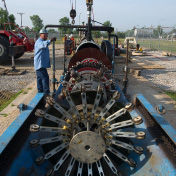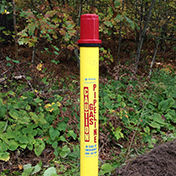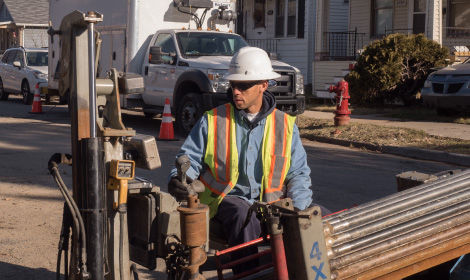Natural Gas Pipeline Safety
DTE Energy's Pipeline Integrity management program, in conjunction with federal and state regulations, ensures that our natural gas network is regularly inspected, and maintenance work is performed, such as leak surveys and corrosion control. This program enhances our existing initiatives to maintain a safe, reliable pipeline system.
Pipeline Inspections

DTE performs routine inspections inside some pipeline sections, using a sophisticated electronic device sent through pipelines to identify internal problems. Above its pipeline system, DTE conducts aerial surveys twice a month of its 1,900-hundred miles of transmission lines. All main and service lines are surveyed at least every three years, and cast iron mains are surveyed annually.
Learn More About Pipeline Safety
How to Identify a Pipeline

DTE Energy has a network of underground natural gas pipelines throughout Michigan that safely and reliably delivers natural gas to 1.3 million residential and business customers.
Since buried pipelines are out of sight, it's easy to forget about them. Sometimes, pipelines are indicated by ground markers (see image), but often they are not. DTE Energy uses these markers to indicate approximate, but not exact, locations of pipelines.
To help keep you safe, contact MISS DIG by dialing 811 or visiting missdig811.org prior to digging or excavating.
Control Room

DTE controllers monitor the company’s 41,500-mile natural gas pipeline system to ensure customers are safe and receive the energy needed to keep their homes and businesses warm. From a modern control room, controllers analyze a constant flow of data 24/7/365 from more than 4,500 points along the system. Changes in pressure and other information are transmitted from pipeline sensors to computers and telemetry equipment that display the information to the controllers. Should an emergency arise, controllers can close more than 140 remote-control valves to shut the flow of gas at key locations in the pipeline system.
